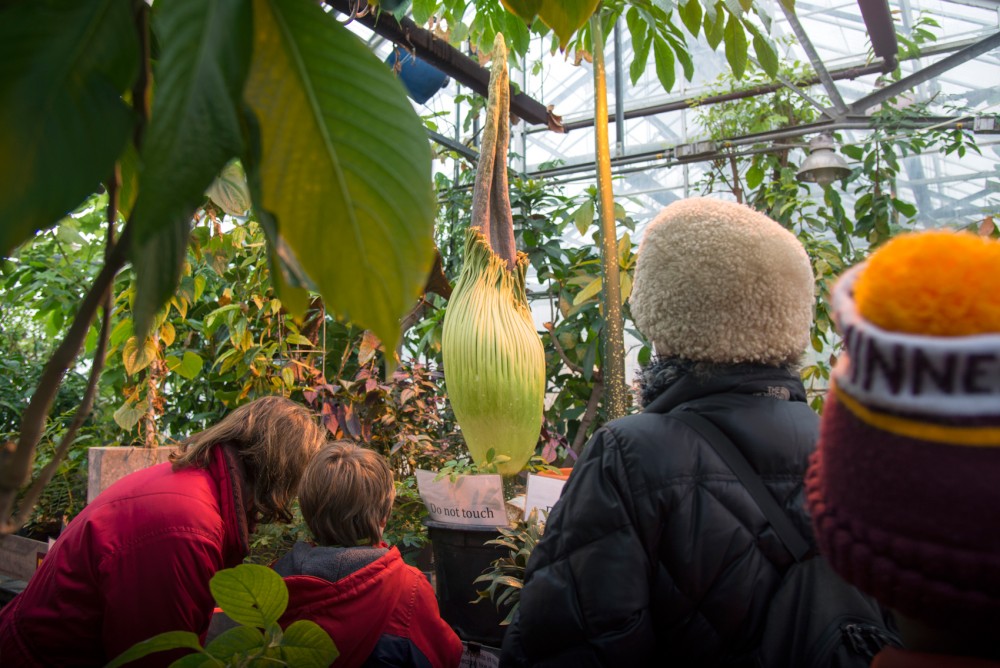The absence of a rotten meat stench disappointed thousands of visitors to the University of Minnesota’s College of Biological Sciences Conservatory this weekend.
Instead, crowds saw a 5-foot plant that didn’t smell quite as putrid as they had hoped.
The corpse flower, predicted to bloom last week, finally unfurled on Sunday evening, after leaving many conservatory employees concerned and frustrated.
“We’re calling it a diva,” said conservatory curator Lisa Philander Sunday afternoon.
Before the weekend Philander said she thought the tropical corpse flower would have already blossomed, which it does once every several years.
“If it doesn’t bloom tonight, I’ll be shocked,” she said on Friday.
It was supposed to begin its six-hour bloom Thursday at about 4 p.m., according to predication by Brian O’Brien, a Gustavus Adolphus College chemistry professor who acquired seeds for the St. Peter, Minn., school’s own corpse flower.
Dried, spotted leaves on the outside of the plant indicated that the plant would flower soon, so the conservatory remained open over the weekend and extended its hours in anticipation, Philander said.
When the plant blooms, it warms and emits a scent often likened to rotting meat in order to attract pollinators such as flies and carrion beetles.
The flower attracted thousands of people over the past week, including many first-time conservatory visitors, Philander said.
The University acquired its corpse flower — a species native to the island of Sumatra — about 20 years ago when a researcher from the University of Wisconsin-Madison collected seeds and distributed them to other schools, Philander said.
Plant biology junior Christina Gengelbach said she wasn’t suprprised that the plant bloomed later than expected.
“It depends who you’re asking on the prediction,” Gengelbach said, adding that factors unique to individual plants can vary the flowering’s
timing.
“Even the same plant year to year won’t act the same,” Gengelbach said, “so every corpse flower’s going to be different from the next.”
She said in general, corpse flowers have a two-week window when they’re expected to bloom.
Sunday was the University’s flower’s 14th day in that time frame. Between Jan. 26 and Feb. 7, the plant grew about 30 inches taller.


